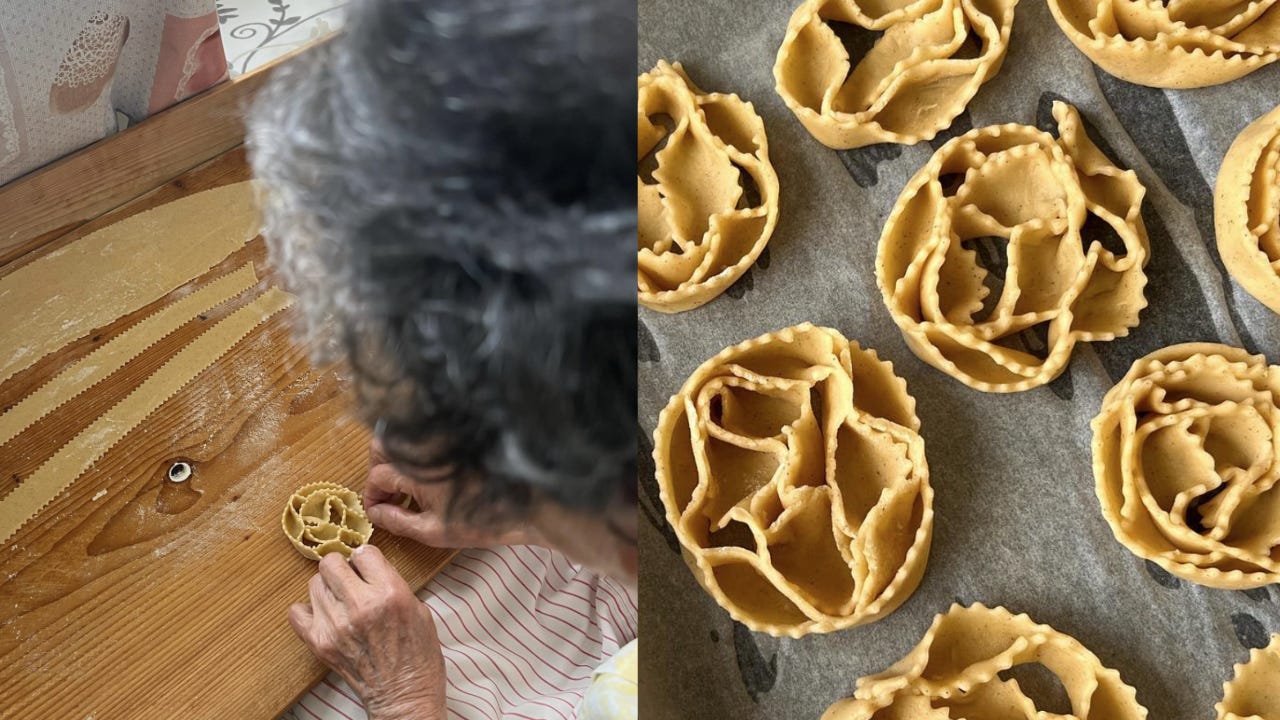Festive Curiosities | Puglia's most iconic Christmas dessert
Festive food is a serious business in Italy, as it should be.
Welcome to our Cabinet of Curiosities, the source for your monthly food digest and discovery of all things curious about the world of Italian food culture!
Christmas and New Year’s Eve are amongst the most commercial festivities that exist in the world. However, thanks to the Italian way of being die-hard lovers of tradition, many unique practices and recipes survive. We’re here to uncover some of them — and make you hungry.
Cartellate, Puglia’s most iconic Christmas dessert
by Laís Zimmermann: cheese nerd and food history lover
Cartellate are thin and crunchy strips of fried dough covered in a sweet syrup with a very particular shape. Popular belief explains the unusual shape as representing baby Jesus’ halo or the bands that wrapped him in his cradle.
Even though cartellate are now part of the Christian tradition, one recent discovery may point to this desserts’ origins as older than the religion itself. A cave painting from the 6th century BC found near Bari depicts the process of making a very similar sweet dish: Lanxsatura. Lanxsatura were, in the Greek pagan rite, sweets offered to the goddess Demeter to ensure a good harvest. With the advent of Christianity, these sweets began to be made in honour of the Virgin Mary with the same purpose.
The origin of the name cartellate may be Greek as well, coming from the word kàrtallos, meaning basket. Another theory says that it could come from the Italian incartellate, meaning crumpled. However the link with Greece seems even stronger when xirotigani is brought into play, a typical dessert from Crete that is basically identical to the Apulian version.
Cartellate were enjoyed by all layers of society throughout history. There is written evidence they were served at the nuptial dinner of Bona Sforza, duchess of Bari, in 1517. Records dating back to 1762 from Bari’s benedictine nuns also testify the presence of this iconic dessert. At that time they were called nevole, which is still the term used in some cities in northern Puglia.
The huge variety of regional names for cartellate (at least 50!) is due to their presence in the whole region, as well as next door in Basilicata and Molise. The different names also reflect the diversity of variants that can be found: some add citrus zest or even a liquor; some cover the cartellate in fig or grape vincotto, or even honey. They can be sprinkled with cinnamon, almonds or just powdered sugar. There isn’t an official recipe, every nonna has their version!

Here is my barese mother in law’s recipe, if you’d like to have a taste of Puglia in your house this Christmas:
300g all purpose flour
100g white wine
80g olive oil
Fig or grape vincotto, or honey
Warm up the wine and oil and mix it with the flour until you have a homogenous dough. Divide the dough in half and roll it out with a pasta machine, starting from the widest setting and ending at a very thin thickness. From this rectangle of pasta sheet cut 2 cm wide strips with a toothed wheel pasta cutter.
Take a strip and make pleats every 2 cm by pinching together the top and bottom part. Then roll the strip up on itself, pinching it every now and then to hold it together, until you have sort of a rose shape. Watch a tutorial here.
Let the cartellate dry overnight before frying them in hot oil for a few minutes. Drain them well before submerging them in warm vincotto or honey for a few seconds. If you like, sprinkle them with cinnamon or almonds. Leave in a cool, dry spot to last for many days.




